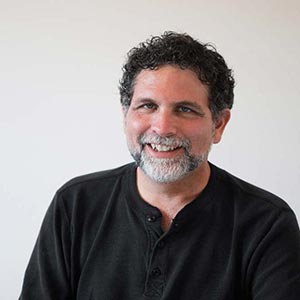What I was confronted with in myfirst encounter with Peirce was not the skepticism of Descartes that assumes everything is untrue and then builds from there. It was a more evolutionary skepticism that assumes that everything is only locally true – true for entities of about our size, with physiological and psychological characteristics like ours, living on a planet similar to our Earth, at about this time in its history. Peirce recognizes the relative truth of all that we know while also keeping in view that everything we know will probably ultimately be replaced many times with deeper understanding. As he continues with his essay Peirce puts his mind to determining just what would be the absolute minimal characteristics that an evolving universe must have started with? What would have to exist in order to make any chance of evolution possible? Peirce identifies two absolutely essential required characteristics.
The first of these characteristics is the ability for spontaneous creation or if you prefer the existence of pure chance, absolute novelty. In order for evolution to occur Peirce realized there must be at a bare minimum the possibility for something new to appear from nowhere and out of nothing. Philosophically if this were not the case nothing could possibly have ever arisen that could ultimately have led to the universe. But this possibility of the purely novel is not enough, because any universe that contained only the ability for novelty and nothing else would be doomed to total chaos. New and unrelated events would continually explode into existence in a never ending cascade of confusion. So Peirce evokes a second characteristic that completes the minimum requirements for evolution and this is the ability to form habits. It is the tendency for something that has happened once to be more likely to happen again. This tendency toward habit assures that some degree of order will form in our evolving universe.
Our evolving universe then requires only two elements as a starting point; the ability to change and the tendency to stick. The universe is change that sticks. That’s it. It was such a simple and elegant description of what you would need to start with to end up with an evolving universe that it forced me to sit up straight and ponder. The image of evolution that Peirce evokes is one of pure possibility from which something – and because it emerges spontaneously there is no way to predict what – bursts into being. Soon other ‘somethings’ burst into being and each of them becomes more likely to happen again every time they occur. Thus the universe begins its evolutionary flow with events happening and then tending to happen again and again and slowly, from nothing by possibility, the universe grows.
Having read the entire essay, I sat, and looked around me and realized that absolutely everything was a product of this process of change that sticks. The physical objects and my own physical form were built from chance possibility that tended to stick. My thoughts also were made from the same essential building non-blocks. What I saw around me now was a world made up of pure habit. I saw everything as habits, as tendencies with varying amounts of strength that gave them their sense of solidity. I was in the midst of a flow of existence like liquid running through a river bed. The liquid was not equally fluid everywhere. In some places it was thin like water and ran quickly passing from one form into another. In other places it was viscous like oil or gelatin and the oozing shapes it took remained fixed for a time before reshaping. In still other places the liquid was more like glass so that it flowed so slowly that only over large amounts of time could you perceive its movement.
Still sitting with Peirce’s essay in my hands I now found myself in a liquid universe of evolution. Mind, matter, life, non-life – It was all part of one flowing mass of being that had at the very bottom the two characteristics of spontaneous chance and the tendency to form habits. It seemed to me that at least for a while I had made contact with the vision of Charles Sanders Peirce.
